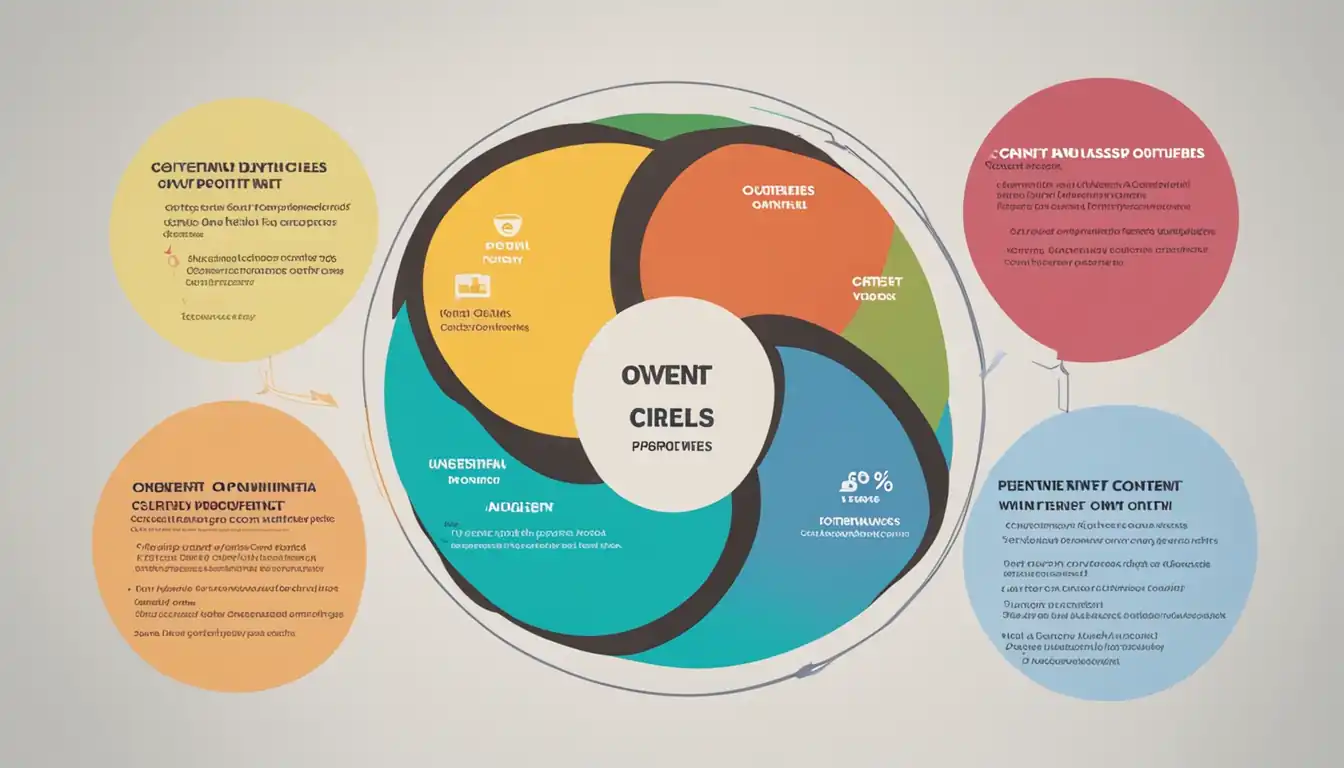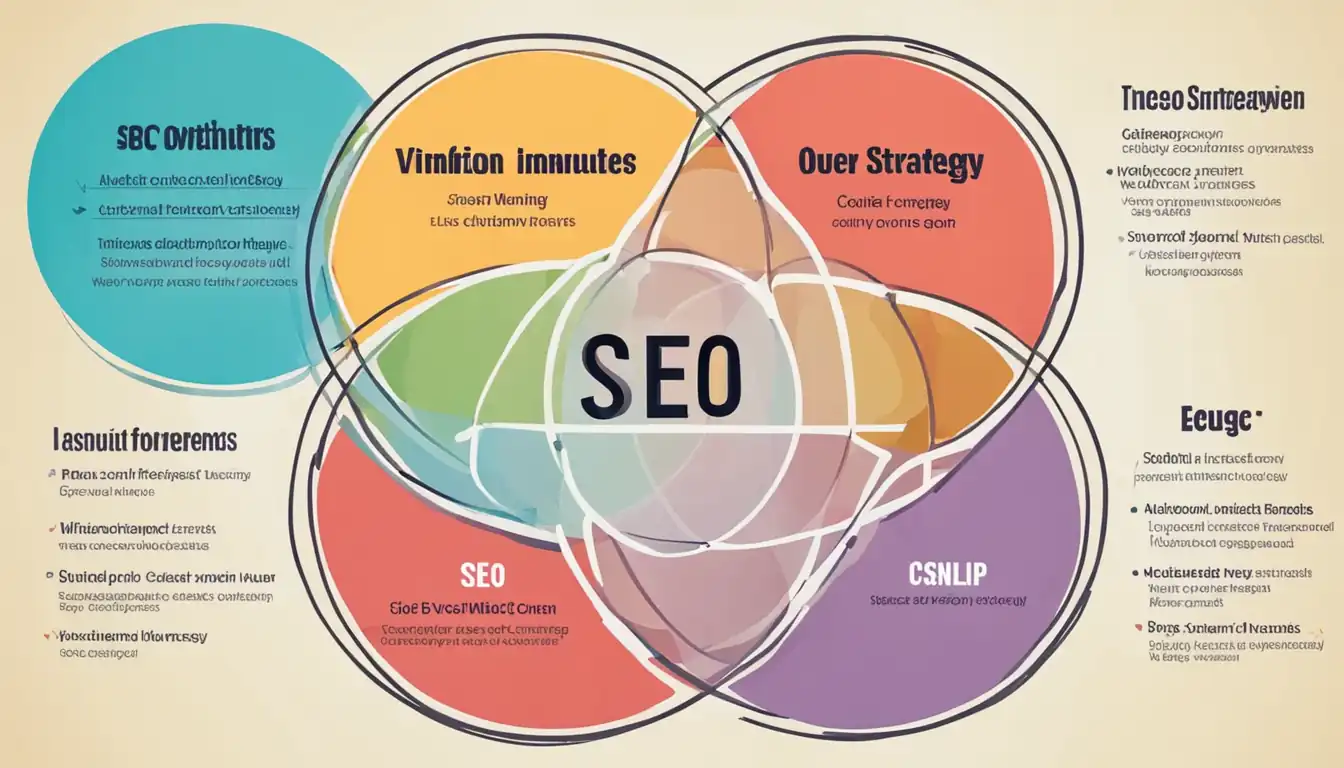Content Gap Identification for SEO

When it comes to boosting your website's SEO performance, identifying content gaps is key. Understanding what content your audience is searching for and what your competitors are offering can help you tailor your strategy for success. In this post, we will explore the importance of content gap analysis and how to effectively implement it into your SEO strategy.
Understanding Content Gaps and Their Impact on SEO
What is a Content Gap
A content gap refers to the difference between the content that your target audience is searching for and the content that your website currently provides. It can be identified by analyzing keyword research data, competitor analysis, and user intent.
Why Identifying Content Gaps Boosts SEO Performance
Identifying content gaps is crucial for improving SEO performance because it allows you to create targeted, relevant content that meets the needs of your audience. By filling these gaps with high-quality, optimized content, you can increase organic traffic, improve search engine rankings, and ultimately drive more conversions.
Tools and Techniques for Effective Content Gap Analysis
Leveraging SEO Tools to Discover Missing Topics
One of the most effective ways to identify content gaps for SEO is by utilizing various SEO tools. Tools like SEMrush, Ahrefs, and Moz can provide valuable insights into keyword rankings, search volume, and competitor analysis. By using these tools, you can uncover topics that your competitors are ranking for but you are not, allowing you to fill those content gaps on your own website.
Analyzing Competitors’ Strengths and Weaknesses
Another important technique for content gap identification is analyzing your competitors' strengths and weaknesses. By conducting a thorough analysis of their content strategy, you can identify areas where they are outperforming you and where there are opportunities for improvement on your end. This competitive analysis can help you pinpoint specific topics or keywords that are missing from your own content strategy, enabling you to create more targeted and comprehensive content that will drive organic traffic to your site.
Step-by-Step Guide to Conducting a Content Gap Analysis

Gathering Initial Data for Your Website
Before diving into the content gap analysis, it is crucial to gather initial data about your website. This includes identifying your target keywords, understanding your current content strategy, and analyzing your existing content performance metrics such as organic traffic, keyword rankings, and user engagement.
Key Steps:
- Compile a list of target keywords relevant to your business.
- Review your current content inventory and categorize them based on topics or themes.
- Analyze the performance of each piece of content using tools like Google Analytics and SEMrush.
Identifying Opportunities Through Competitive Insights
Once you have a clear understanding of your own website's content landscape, it's time to shift focus towards analyzing your competitors' content strategies. By identifying gaps in their content offerings, you can uncover valuable opportunities for creating new and unique content that can help you outrank them in search engine results pages (SERPs).
Key Steps:
- Identify top competitors in your industry or niche.
- Analyze their content strategy by looking at the types of content they produce, their keyword targeting approach, and their overall content quality.
- Use tools like Ahrefs or Moz to compare your website's content with that of your competitors and identify gaps in topics or keywords that they are ranking for but you are not.
By following these steps diligently, you will be able to conduct a comprehensive content gap analysis that will inform your SEO strategy and help you create high-quality, relevant content that resonates with both search engines and users alike.
Integrating Content Gap Findings into Your SEO Strategy

Identifying content gaps is only the first step in improving your SEO strategy. Once you have a clear understanding of what content your target audience is searching for but not finding, it's crucial to integrate these findings into your overall SEO strategy.
Prioritizing Content Development Based on Gap Analysis
After conducting a thorough content gap analysis, prioritize the development of new content based on the following criteria:
- Search Volume: Focus on topics with high search volume and low competition to maximize visibility.
- Relevance: Ensure that the new content aligns with your brand and target audience's interests.
- User Intent: Create content that meets the specific needs and intentions of users searching for related keywords.
- Competitor Analysis: Identify gaps where competitors are ranking well and aim to outperform them with superior content.
By prioritizing content development based on these factors, you can effectively fill in the gaps in your existing content strategy and improve your overall SEO performance.
Measuring the Impact of Filling Content Gaps
Once you have developed and published new content to address identified gaps, it's essential to measure the impact of these efforts on your SEO performance. Use key metrics such as:
- Organic Traffic: Monitor changes in organic traffic to pages where new content has been added.
- Keyword Rankings: Track improvements in keyword rankings for targeted terms related to the filled content gaps.
- Engagement Metrics: Analyze user engagement metrics like bounce rate, time on page, and click-through rates for new content.
By regularly monitoring these metrics, you can assess the effectiveness of filling content gaps in driving organic traffic and improving search engine visibility. Adjust your SEO strategy as needed based on these insights to continue optimizing your website's performance.
Case Studies and Success Stories of Content Gap Strategies
Content gap identification is a crucial aspect of SEO strategy, and real-life case studies and success stories can provide valuable insights into the impact of filling these gaps.
Real-life Examples of Improved SEO from Filled Content Gaps
Case Study 1: Company X
- Company X identified a content gap in their industry related to emerging trends. By creating comprehensive guides and articles on these topics, they saw a significant increase in organic traffic and improved search engine rankings.
Case Study 2: Website Y
- Website Y conducted a thorough content gap analysis and discovered that they were missing key informational content that their target audience was searching for. After addressing these gaps with high-quality blog posts and resources, they experienced a boost in user engagement and higher conversion rates.
Case Study 3: Business Z
- Business Z focused on optimizing their existing content by identifying gaps in keyword coverage. By updating old articles with relevant keywords and expanding on topics that were underrepresented, they saw a noticeable improvement in their search visibility and overall website performance.
Lessons Learned from Failed Attempts at Closing Content Gaps
Lesson 1: Lack of Research
It is essential to conduct thorough research before attempting to fill content gaps. Without understanding your target audience's needs and preferences, your efforts may not yield the desired results.
Lesson 2: Poor Quality Content
Simply filling gaps with low-quality or irrelevant content can do more harm than good. It is crucial to prioritize quality over quantity when creating new content to address identified gaps.
Lesson 3: Ignoring User Intent
One common mistake in closing content gaps is failing to align the new content with user intent. Understanding why users are searching for specific information can help tailor your content to meet their needs effectively.
In conclusion, leveraging real-life case studies and learning from both successful and unsuccessful attempts at closing content gaps can inform your SEO strategy and lead to improved organic search performance.
Conclusion
By leveraging tools and techniques to identify content gaps, you can set yourself apart from the competition and improve your SEO performance. Remember to continuously analyze and adjust your strategy based on the insights gained from filling these content gaps. With a well-rounded approach to content gap identification, you can drive more traffic to your site and achieve long-term success in the ever-evolving world of SEO.